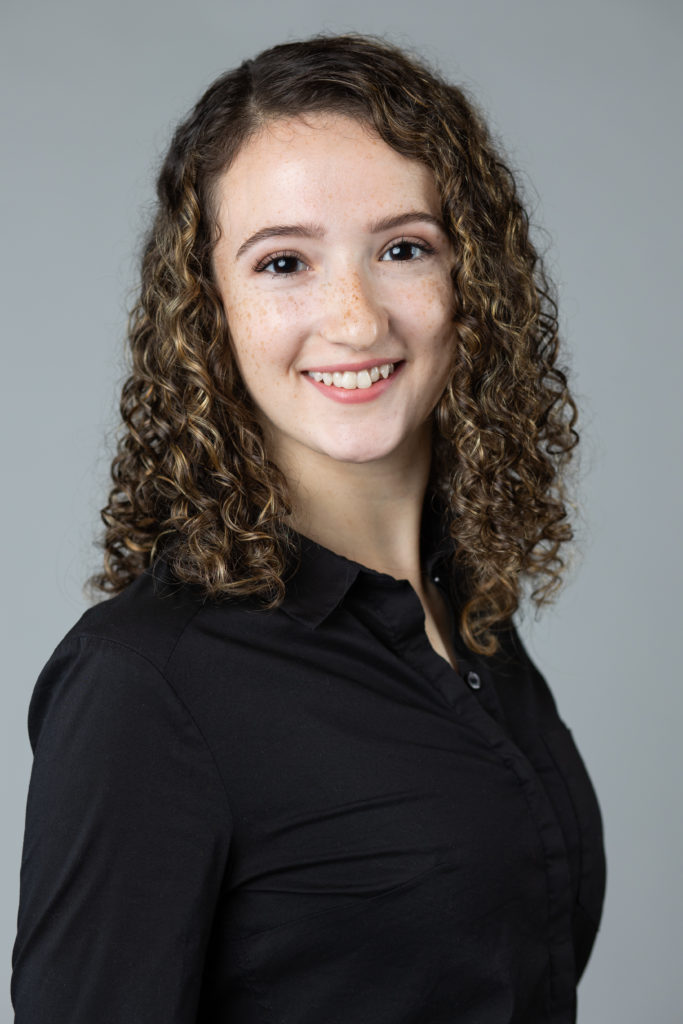About Liora

Liora is a resident of Mequon, Wisconsin, and is currently a student at Goucher College in Towson, MD. At Goucher, she is obtaining her Bachelor of Arts degree in Dance with a minor in Psychology. While at Goucher, Liora has had the opportunity to perform in works by Iquail Shaheed and Rick Southerland. In the Spring of 2020, Liora studied at the Jerusalem Academy of Music and Dance under the direction of Paul Bloom. There, she became versed in Gaga dance from former Batsheva dancers Adi Zlatin, Aya Israeli, and Noa Zuk. She also studied with Maya Resheff of Vertigo Dance Company, as well as Mate Moray and Alexander Alexandrov of the Israel Ballet. Over the course of her college career, Liora has also studied modern dance, ballet, and West African dance, as well as courses in pilates, yoga, and dance composition. Among her passions, Liora plans to pursue a role in the dance/movement therapy field, using movement as a mode of expression and form of treatment for psychological disorders. She takes a special interest in working with other dancers, driven by the desire to give back to the dance community and support her peers in reaching the potential of their careers. In her spare time, Liora also enjoys photography, fashion, and writing.
Artist’s Statement

My creative work aims to extract deeper meaning from mundane, everyday tasks. I find my most creative moments come from sparks of inspiration outside of the studio, and are influenced by my community, nature, and my psyche. As a spiritual Jewish woman in a very secular world, I am inspired to elevate my surroundings by finding the beauty it holds within. I choreograph according to the dance inherent in life, focusing specifically on fleeting moments, such as feeling the cold wind on my face, the sharp pain of a heartbreak, or the overwhelming joy of simply being alive. I use these sensations to motivate my movement, paying close attention to how my body is inclined to move, resulting in invigorating movement, warming the heart with the expression of inner-self.
Inspired by the Gaga movement language developed by Ohad Naharin, my creative process illustrates the journey of finding pleasure through pain, and opening the body to be receptive to whatever is impacting it. I find the height of release when pushing myself to the edge of exhaustion, where I completely invest in my work emotionally, mentally, and physically. I aspire to give myself up to the dance, becoming one with the movement, the motivation, and the music. In doing so, I hope to trap emotions in time and preserve them.
When viewing my work, I strive for the audience to both recognize the emotions and to be drawn into the moment. I elicit the ability for my audience to leave performances with a greater appreciation for their ability to connect to experiences on an emotional level and to feel comfortable expressing their own truths. Since the choreography suggests everyday movements can be strung together to form a dance, the viewer can relate to the dancers and learn to listen to emotions within themselves, letting them thrive. This foundation of my work is largely influenced by the concepts of dance/movement therapy, and is fundamentally rooted in the thought that movement can express the subconscious. Utilizing the concepts of Mary Whitehouse’s authentic movement practice, I am motivated by my sensory reactions to stimuli. The body never lies, therefore it is the medium I use for displaying the truths of one’s life and emotions.
My internal dance is unique to only myself, as no one else will have a natural inclination to move in the exact same manner. These differences and quirks are what make life truly beautiful. My soul tells me how to move, and therefore my dances are saturated with emotion. The conventions of my works are often centered around the use of contrasts, bright colors, nature, and natural light, exhibiting movement originating from the center of the body, giving power and purpose to the limbs and face, while using breath as the quality that keeps the flow of energy constant.